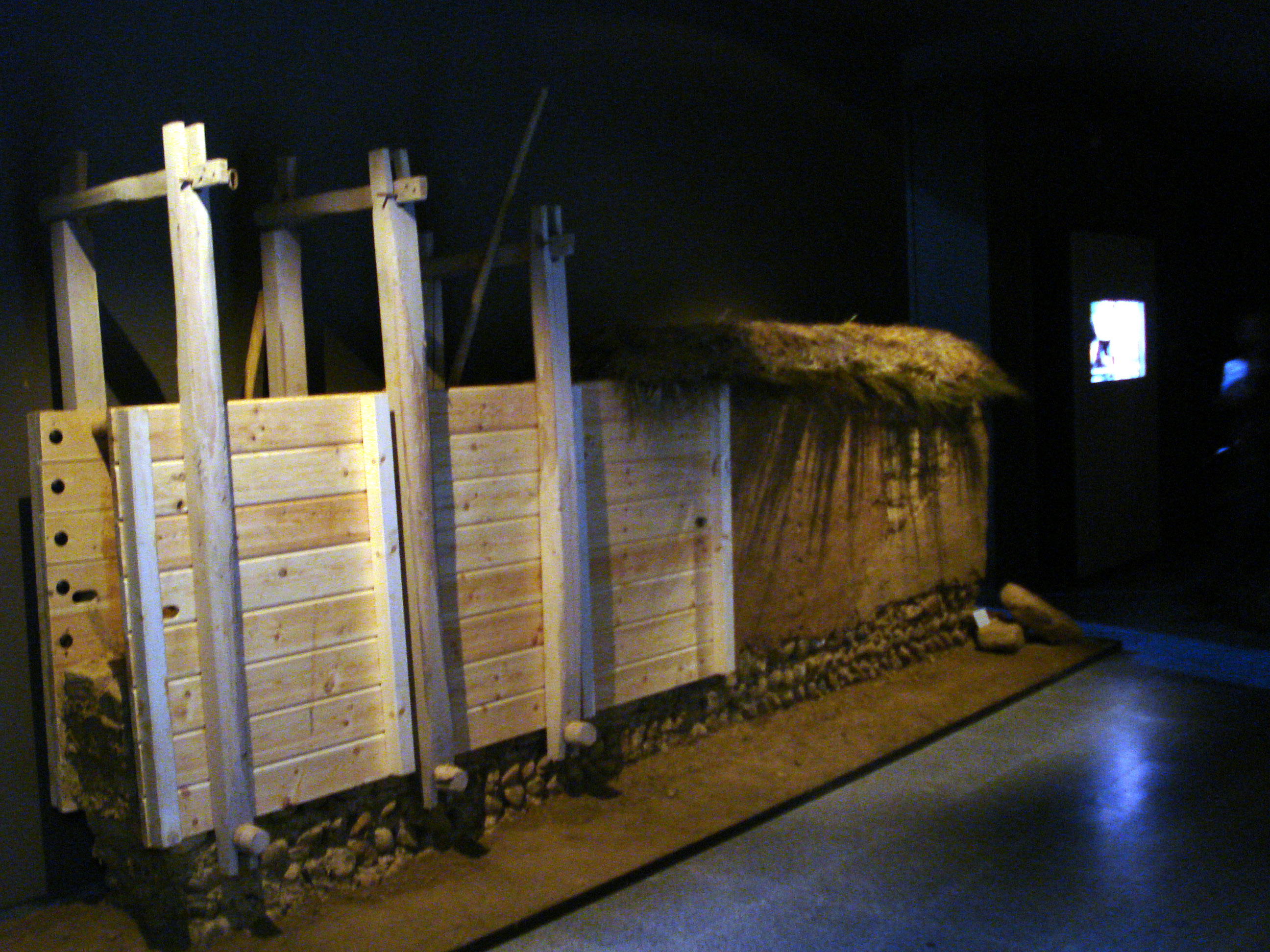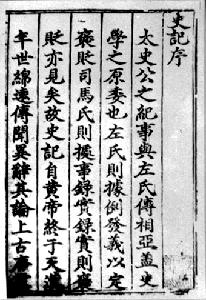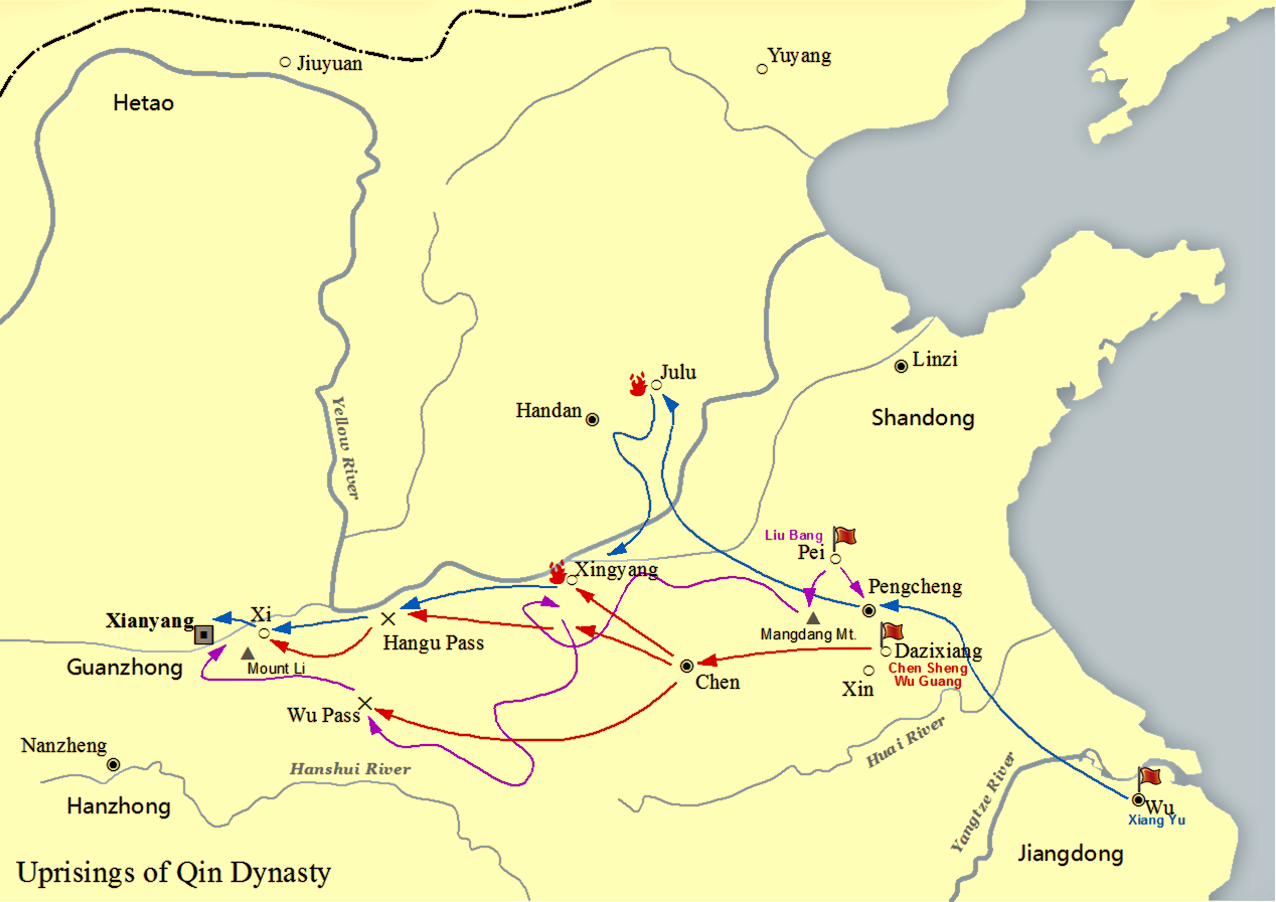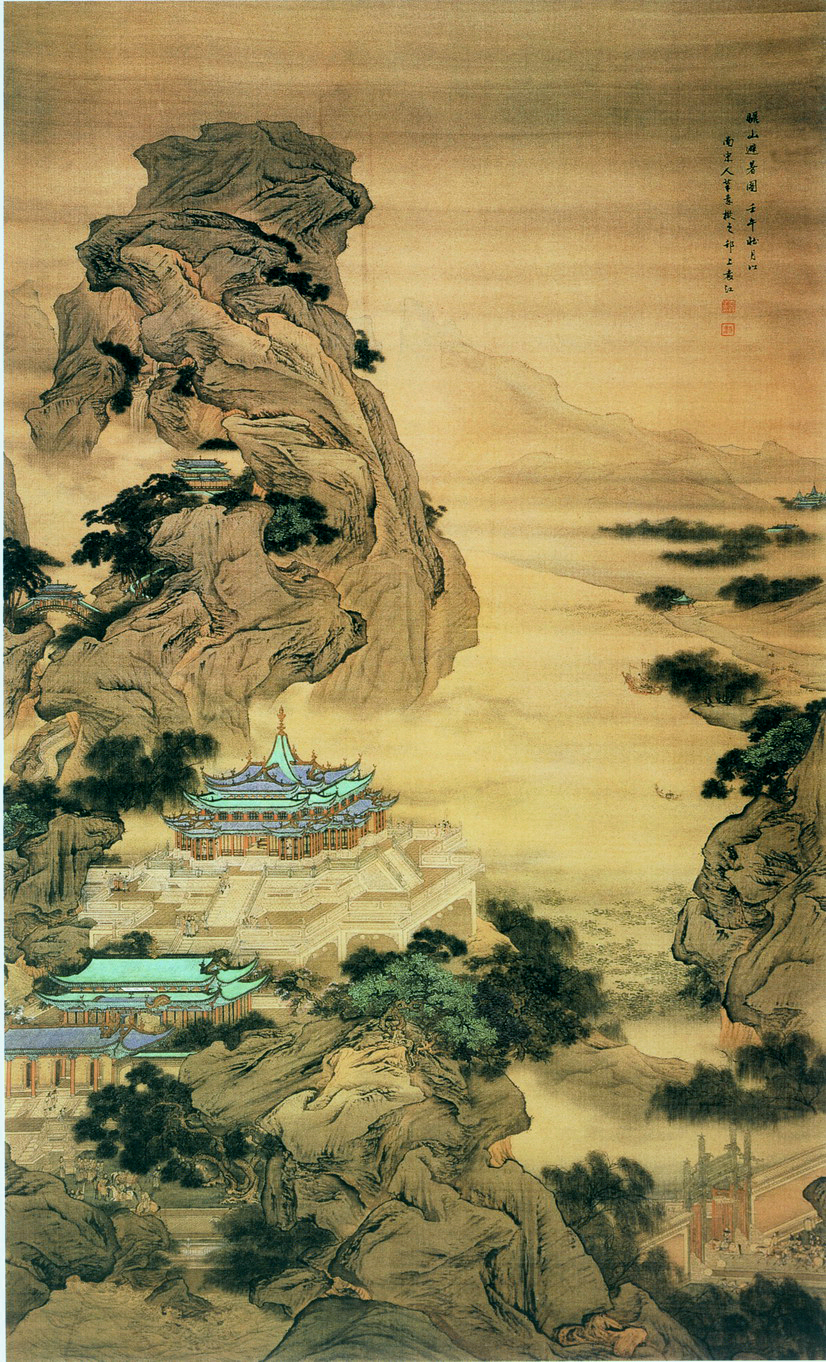|
Epang Palace
The Epang Palace was a Chinese palace complex built during the reign of Qin Shi Huang, the first emperor of China and the founder of the short-lived Qin dynasty. It is located in western Xi’an, Shaanxi Province. Archaeologists believe that only the front hall was completed before the capital was sacked in 206 BCE.http://english.people.com.cn/200412/28/eng20041228_168965.html Epang Palace Legends Blasted Name There are three common pronunciations of the name: ''Epeng'', ''Efang'', and ''Afang''. Which pronunciation should be regarded as "correct" has been subject of much debate, with the ''Kangxi Dictionary'' advocating for ''Epeng'', and the '' Guifan Dictionary'' advocating for ''Efang''. The Han dynasty historian Sima Qian does not explain what the name means, but the later commentator Yan Shigu provides three possible explanations. The first is that the name refers to the broadness of the rooms (''fang'') of the palace. The second that ''e'' is a local name for a hill, ... [...More Info...] [...Related Items...] OR: [Wikipedia] [Google] [Baidu] |
Xi'an
Xi'an ( , ; ; Chinese: ), frequently spelled as Xian and also known by #Name, other names, is the list of capitals in China, capital of Shaanxi, Shaanxi Province. A Sub-provincial division#Sub-provincial municipalities, sub-provincial city on the Guanzhong, Guanzhong Plain, the city is the third most populous city in Western China, after Chongqing and Chengdu, as well as the most populous city in Northwest China. Its total population was 12,952,907 as of the 2020 census. The total urban population was 9.28 million. Since the 1980s, as part of the China Western Development, economic growth of inland China especially for the central and northwest regions, Xi'an has re-emerged as a cultural, industrial, political and educational centre of the entire central-northwest region, with many facilities for research and development. Xi'an currently holds sub-provincial city in the People's Republic of China, sub-provincial status, administering 11 districts and 2 counties. In 2020, Xi'a ... [...More Info...] [...Related Items...] OR: [Wikipedia] [Google] [Baidu] |
Qin's Wars Of Unification
Qin's wars of unification were a series of military campaigns launched in the late 3rd century BC by the Qin state against the other six major Chinese states — Han, Zhao, Yan, Wei, Chu and Qi. Between 247 BC and 221 BC, Qin had emerged as one of the most powerful of the Seven Warring States in China. In 230 BC, Ying Zheng, the King of Qin, unleashed the final campaigns of the Warring States period, setting out to conquer the remaining states one by one. Following the fall of Qi in 221 BC, China was unified under Qin control. Ying Zheng declared himself "Qin Shi Huang" (meaning "First Emperor of Qin") and established the Qin dynasty, becoming the first sovereign ruler of a unified China. Background Rise of Qin and early conquests Over the course of the Warring States period, the Qin state had evolved to become the most powerful of the seven major states in China, particularly after Shang Yang's reforms in the mid 4th century BC. The other six states would rep ... [...More Info...] [...Related Items...] OR: [Wikipedia] [Google] [Baidu] |
Du Mu
Du Mu (; 803–852) was a Chinese calligrapher, poet, and politician who lived during the late Tang dynasty. His courtesy name was Muzhi (), and art name Fanchuan (). He is best known for his lyrical and romantic quatrains. Regarded as a major poet during a golden age of Chinese poetry, his name is often mentioned together with that of another renowned Late Tang poet, Li Shangyin, as the "Little Li-Du" (), in contrast to the "Great Li-Du": Li Bai and Du Fu. Among his influences were Du Fu, Li Bai, Han Yu and Liu Zongyuan. Biography Du Mu was born in the Tang capital Chang'an (modern Xi'an) into an elite family, the Jingzhao Du clan, whose fortunes were declining. His grandfather was Du You, a minister at the Tang court and the compiler of the Tang Dynasty encyclopedia ''Tongdian''. He passed the ''jinshi'' ("Presented Scholar") level of the imperial civil service examination in 828 at the age of 25, and began his career as a bureaucrat holding a series of minor posts, ... [...More Info...] [...Related Items...] OR: [Wikipedia] [Google] [Baidu] |
Tang Dynasty
The Tang dynasty (, ; zh, t= ), or Tang Empire, was an imperial dynasty of China that ruled from 618 to 907 AD, with an interregnum between 690 and 705. It was preceded by the Sui dynasty and followed by the Five Dynasties and Ten Kingdoms period. Historians generally regard the Tang as a high point in Chinese civilization, and a golden age of cosmopolitan culture. Tang territory, acquired through the military campaigns of its early rulers, rivaled that of the Han dynasty. The Lǐ family () founded the dynasty, seizing power during the decline and collapse of the Sui Empire and inaugurating a period of progress and stability in the first half of the dynasty's rule. The dynasty was formally interrupted during 690–705 when Empress Wu Zetian seized the throne, proclaiming the Wu Zhou dynasty and becoming the only legitimate Chinese empress regnant. The devastating An Lushan Rebellion (755–763) shook the nation and led to the decline of central authority in the dynas ... [...More Info...] [...Related Items...] OR: [Wikipedia] [Google] [Baidu] |
Rammed Earth
Rammed earth is a technique for constructing foundations, floors, and walls using compacted natural raw materials such as earth, chalk, lime, or gravel. It is an ancient method that has been revived recently as a sustainable building method. Under its French name of pisé it is also a material for sculptures, usually small and made in molds. It has been especially used in Central Asia and Tibetan art, and sometimes in China. Edifices formed of rammed earth are on every continent except Antarctica, in a range of environments including temperate, wet, semiarid desert, montane, and tropical regions. The availability of suitable soil and a building design appropriate for local climatic conditions are the factors that favour its use. The French term "pisé de terre" or "terre pisé" was sometimes used in English for architectural uses, especially in the 19th century. The process Making rammed earth involves compacting a damp mixture of subsoil that has suitable pro ... [...More Info...] [...Related Items...] OR: [Wikipedia] [Google] [Baidu] |
Records Of The Grand Historian
''Records of the Grand Historian'', also known by its Chinese name ''Shiji'', is a monumental history of China that is the first of China's 24 dynastic histories. The ''Records'' was written in the early 1st century by the ancient Chinese historian Sima Qian, whose father Sima Tan had begun it several decades earlier. The work covers a 2,500-year period from the age of the legendary Yellow Emperor to the reign of Emperor Wu of Han in the author's own time, and describes the world as it was known to the Chinese of the Western Han dynasty. The ''Records'' has been called a "foundational text in Chinese civilization". After Confucius and the First Emperor of Qin, "Sima Qian was one of the creators of Imperial China, not least because by providing definitive biographies, he virtually created the two earlier figures." The ''Records'' set the model for all subsequent dynastic histories of China. In contrast to Western historical works, the ''Records'' do not treat history as "a ... [...More Info...] [...Related Items...] OR: [Wikipedia] [Google] [Baidu] |
Xiang Yu
Xiang Yu (, –202 BC), born Xiang Ji (), was the Hegemon-King (Chinese: 霸王, ''Bà Wáng'') of Western Chu during the Chu–Han Contention period (206–202 BC) of China. A noble of the Chu state, Xiang Yu rebelled against the Qin dynasty and became a prominent warlord. He was granted the title of "Duke of Lu" () by King Huai II of the restoring Chu state in 208 BC. The following year, he led the Chu forces to victory at the Battle of Julu against the Qin armies led by Zhang Han. After the fall of Qin, Xiang Yu was enthroned as the "Hegemon-King of Western Chu" () and ruled a vast area covering modern-day central and eastern China, with Pengcheng as his capital. He engaged Liu Bang, the founding emperor of the Han dynasty, in a long struggle for power, known as the Chu–Han Contention, which concluded with his eventual defeat at the Battle of Gaixia and his suicide. Xiang Yu is depicted in the Wu Shuang Pu (, Table of Peerless Heroes) by Jin Guliang. Names and tit ... [...More Info...] [...Related Items...] OR: [Wikipedia] [Google] [Baidu] |
Chu (state)
Chu, or Ch'u in Wade–Giles romanization, (, Hanyu Pinyin: Chǔ, Old Chinese: ''*s-r̥aʔ'') was a Zhou dynasty vassal state. Their first ruler was King Wu of Chu in the early 8th century BCE. Chu was located in the south of the Zhou heartland and lasted during the Spring and Autumn period. At the end of the Warring States period it was destroyed by the Qin in 223 BCE during the Qin's wars of unification. Also known as Jing () and Jingchu (), Chu included most of the present-day provinces of Hubei and Hunan, along with parts of Chongqing, Guizhou, Henan, Anhui, Jiangxi, Jiangsu, Zhejiang, and Shanghai. For more than 400 years, the Chu capital Danyang was located at the junction of the Dan and Xi Rivers near present-day Xichuan County, Henan, but later moved to Ying. The house of Chu originally bore the clan name Nai ( OC: /*rneːlʔ/) which was later written as Mi ( OC: /*meʔ/). They also bore the lineage name Yan ( OC: /*qlamʔ/, /*qʰɯːm/) which would ... [...More Info...] [...Related Items...] OR: [Wikipedia] [Google] [Baidu] |
Zhao Gao
Zhao Gao (died 207 BC) was a Chinese politician and calligrapher. He was an official of the Qin dynasty of China. Allegedly a eunuch, he served as a close aide to all three rulers of the Qin dynasty – Qin Shi Huang, Qin Er Shi and Ziying – and was regarded as having played an instrumental role in the downfall of the dynasty. Zhao Gao started his career under Qin Shi Huang as Prefect of the Office for Imperial Carriages (中車府令), an official in charge of managing the palace horse-drawn carriages. During this period of time, he also served as an attendant to Huhai, Qin Shi Huang's youngest son, and tutored him in the laws of the Qin Empire. In 210 BC, after Qin Shi Huang died in Shaqiu (沙丘; south of present-day Dapingtai Village, Guangzong County, Hebei), Zhao Gao and Li Si, the Chancellor, secretly changed the emperor's final edict, which named Fusu, the crown prince, the heir to the throne. In the falsified edict, Fusu was ordered to commit suicide while ... [...More Info...] [...Related Items...] OR: [Wikipedia] [Google] [Baidu] |
Eunuch
A eunuch ( ) is a male who has been castration, castrated. Throughout history, castration often served a specific social function. The earliest records for intentional castration to produce eunuchs are from the Sumerian city of Lagash in the 2nd millennium BCE. Over the millennia since, they have performed a wide variety of functions in many different cultures: courtiers or equivalent Domestic worker, domestics, for espionage or clandestine operations, Castrato, castrato singers, concubines, or sexual partners, religious specialists, soldiers, royal guards, government officials, and guardians of women or harem servants. Eunuchs would usually be servants or slavery, slaves who had been castrated to make them less threatening servants of a royal court where physical access to the ruler could wield great influence. Seemingly lowly domestic functions—such as making the ruler's bed, bathing him, cutting his hair, carrying him in his litter (vehicle), litter, or even relaying messag ... [...More Info...] [...Related Items...] OR: [Wikipedia] [Google] [Baidu] |
Qin Er Shi
Qin Er Shi (; (230–October 207 BCE) was the second emperor of the Qin dynasty from 210 to 207 BCE. The son of Qin Shi Huang, he was born as Ying Huhai. He was put on the throne by Li Si and Zhao Gao, circumventing Fusu, Ying's brother and the designated heir. Upon Ying's ascension, both Fusu and the popular general Meng Tian were killed on the orders of Li and Zhao, with Qin Er Shi's role in the assassinations remaining uncertain and controversial. A weak ruler, Qin Er Shi's reign was completely dominated by Zhao Gao, who eventually forced him to commit suicide. By the time of his death, the Qin Empire's power had lessened so much that his successor Ziying ruled as a king, not emperor. Early life Huhai () was the personal name of the Second Emperor. Its Old Chinese pronunciation has been reconstructed as *''Ga-gə′''.Baxter, William & al.Baxter–Sagart Old Chinese Reconstruction", pp. 49–50. 2011. Although his parentage was questioned by many historians ... [...More Info...] [...Related Items...] OR: [Wikipedia] [Google] [Baidu] |
Mount Li
Mount Li () is a mountain located in the northeast of Xi'an in Shaanxi Province, China. The mountain is part of the Qinling mountain range and rises to a height of 1302 metres above sea level. It is one of the eight scenic spots of the Guanzhong Plain and popularly said to "shine like a beacon in the evening sunlight". History Some ancient tales say that the literal Chinese name "Black Steed Mountain" stems from its resemblance to a horse whilst others that the name arose during the Shang and Zhou Dynasties because the "Black Steed Tribe", lived in this area. Another legend cites the mountain as the place from where the Mount Li goddess Lishan Laomu and Nüwa, creator of mankind, repaired the wall of heaven. The two goddesses have long been worshipped on the same mountain. In 771 BCE, King You of Zhou was slain at its foothills alongside his loyal vassal Huan of Zheng. This marked the collapse of the mighty Western Zhou dynasty and began a very long age of endless conflict t ... [...More Info...] [...Related Items...] OR: [Wikipedia] [Google] [Baidu] |








